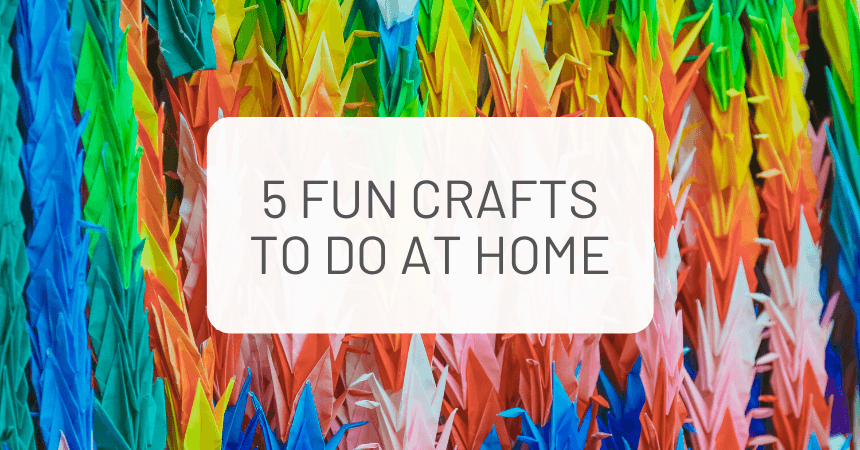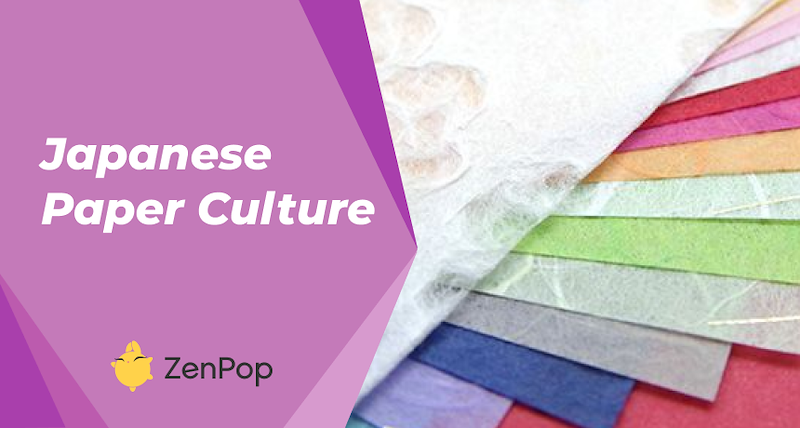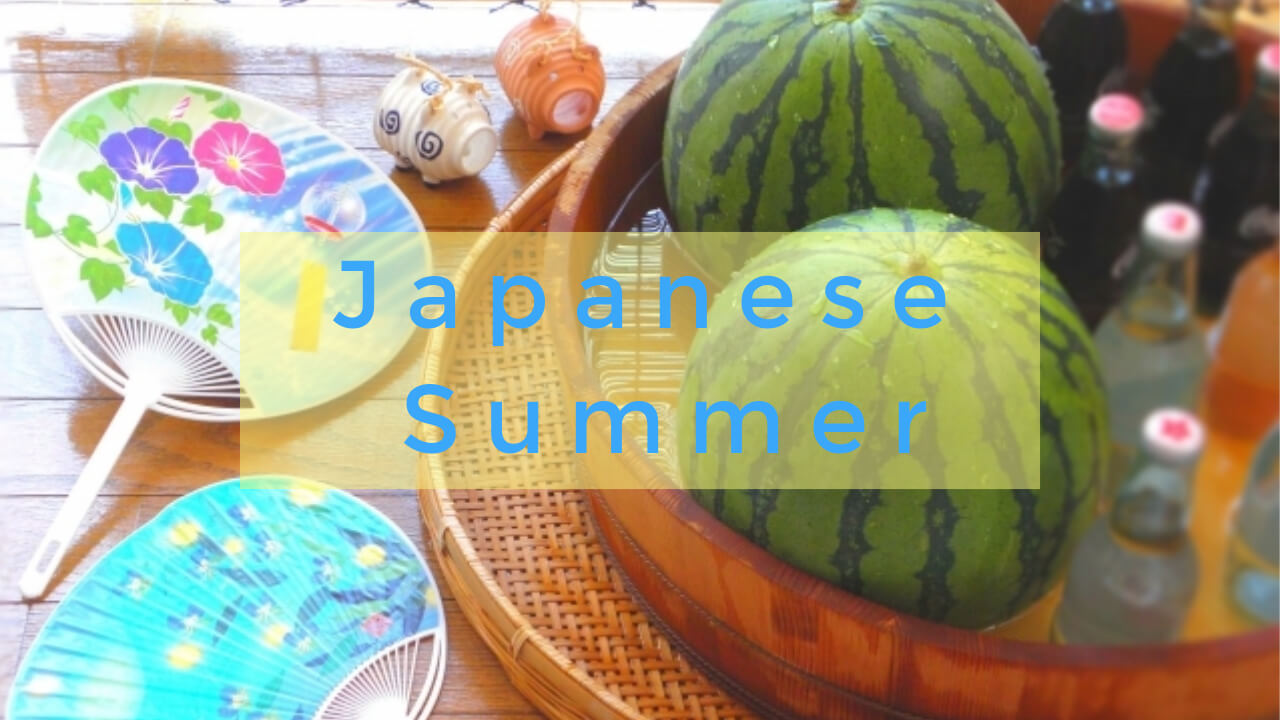
</title><meta name="robots" content="noindex"> 7 Ways to Cool Down Japanese Hot Summer
Have you seen our latest Summer Themed Stationery Pack yet? Learn more about why we included all these items.
Obon is coming up in less than a month! This year, many people will take an obon break between August 11th-16th. Obon is a memorial event for ancestors’ spirits, and family members gather to hold a memorial service. What to do during obon varies from place to place. Some people hold bon-odori (obon dance) festival, and some people float lanterns down the river.
Since family members including uncle and aunts gather for obon, kids often get some pocket money from their relatives or parents. It is called obon-dama. Obon-dama literally means obon money, which is similar to otoshi-dama, the money kids can get from relatives and parents on new year’s day. Obon-dama usually comes in paper envelopes like the photo below.
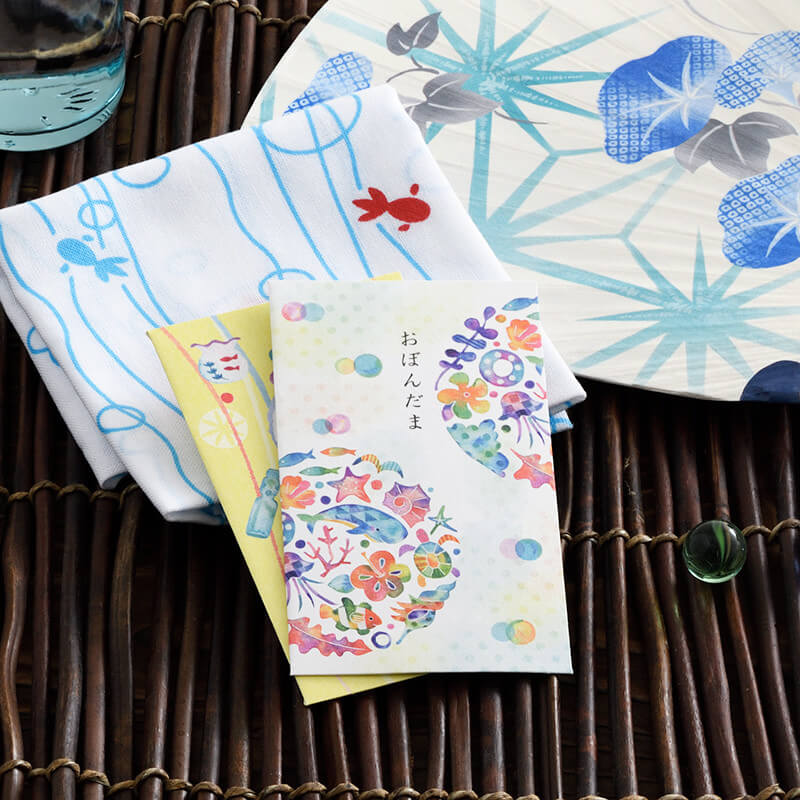
Pochi-Bukuro
This envelope is usually called pochi-bukuro.
Pochi means small or a little, and bukuro (fukuro) means bag or envelope.
Even when the amount inside is not a little, we call it ‘pochi’ because it shows the humbleness of the givers.
In our July stationery pack, we selected these 4 patterns of obon-dama pochi-bukuro.
Each has beautiful summer themed pictures, and today I’d like to introduce you some of Japanese summer cultures associated with these pictures.
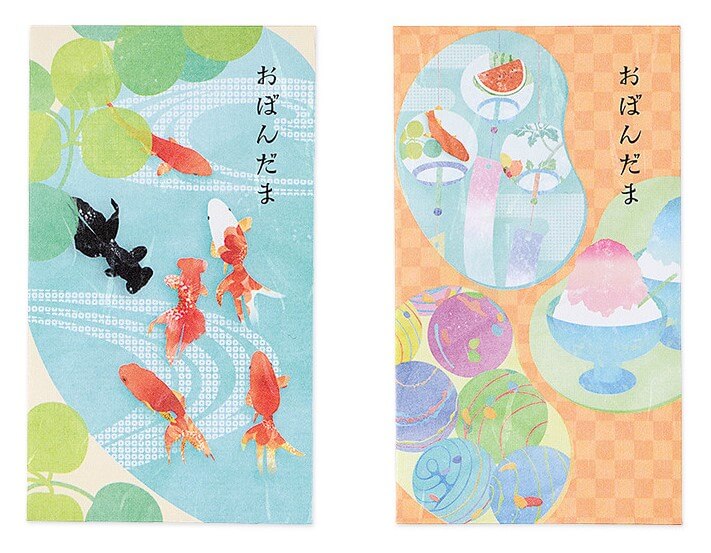
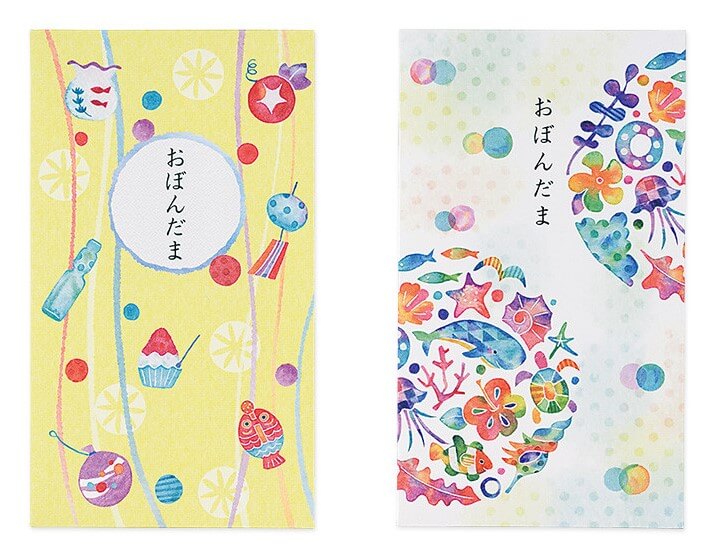
Goldfish
At summer festivals in Japan, people enjoy booths of foods and games.
One of popular booths is kingyo-sukui.
Kingyo-sukui means goldfish scooping, and kids love playing it.
Many goldfish are swimming in the pool, and the game challengers try to catch one with a scooper.
A scooper is made with a thin sheet of Japanese paper, and you need to be careful not to tear the paper as it gets wet.
If you catch any goldfish, you can bring it your home as a pet.
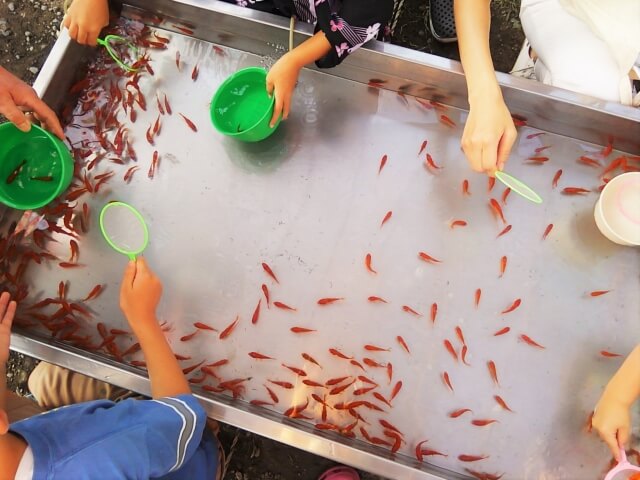
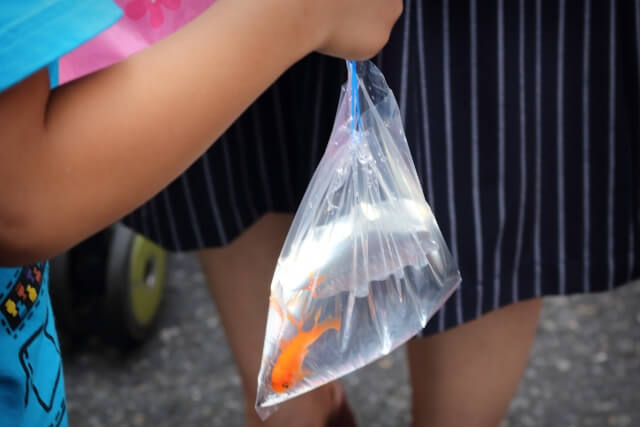
Shaved ice
Shaved ice is called kaki-gori (かき氷) in Japanese, and it is literally ice shaved into fluffy pieces.
It is also one of the famous foods that you can get at summer festivals in Japan, or you can make it by yourself with a kaki-gori machine.
After you shave a bowl full of ice, add some fruit flavored syrup.
Strawberry, melon, and soda are popular flavors. And some people like to add condensed milk to make it sweeter.
Plus, if you add some fruits on the top, it will be even better!
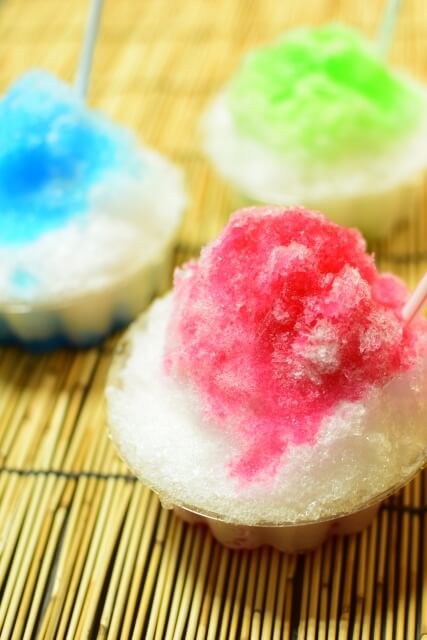
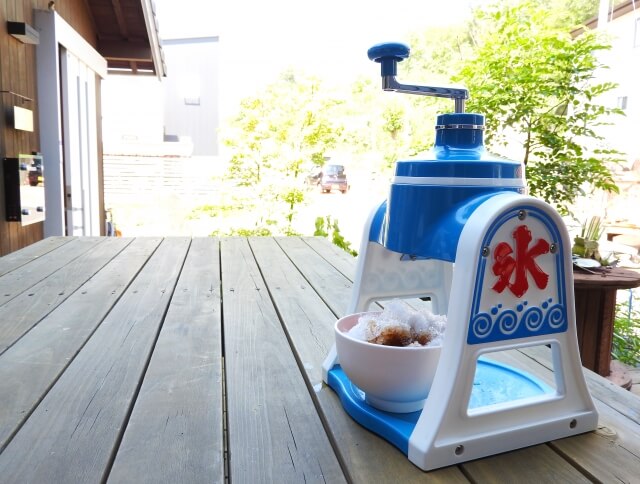
Yo-Yo Balloon
Yo-Yo balloon is known as water yo-yo.
It is a palm-sized balloon and there is a little water in it.
Fishing for a yo-yo balloon is also a kind of game that kids love at summer festivals.
A lot of yo-yo balloons are floating in a small water pool, and game challengers try to fish one out with a thin string of paper.
If they fish any of yo-yo balloons before the string tears, they can take them.
Yo-yo balloons are painted colorfully, and looking at those balloons floating on water is also calming and summery.
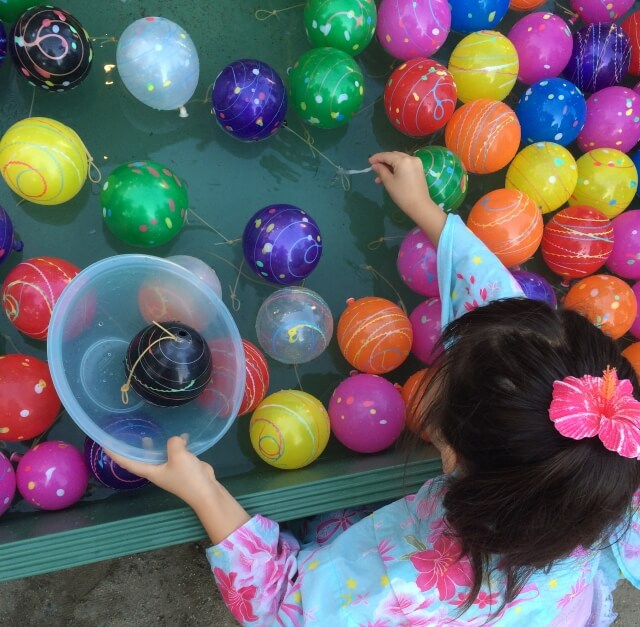
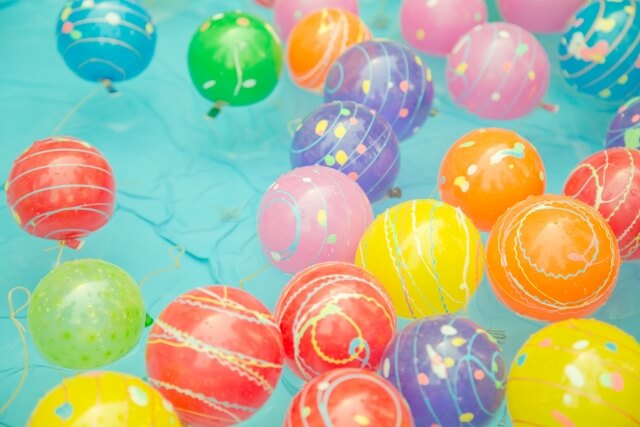
Wind bell
Fu-rin (風鈴) is a wind bell to hang by a door or window.
The sound of the wind bell is like ring ring, and that sound makes people feel a little cooler during hot summer.
Some people say that sound is kind of similar to a singing cricket.
Usually furin is made of iron, glass or ceramic.
There are some different shapes, but round ones are the standard and the most popular.
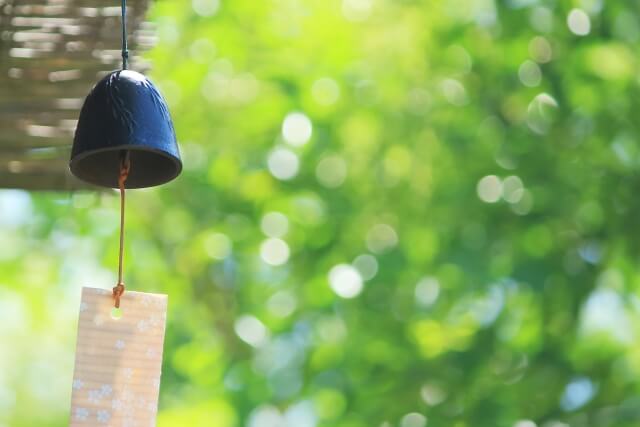
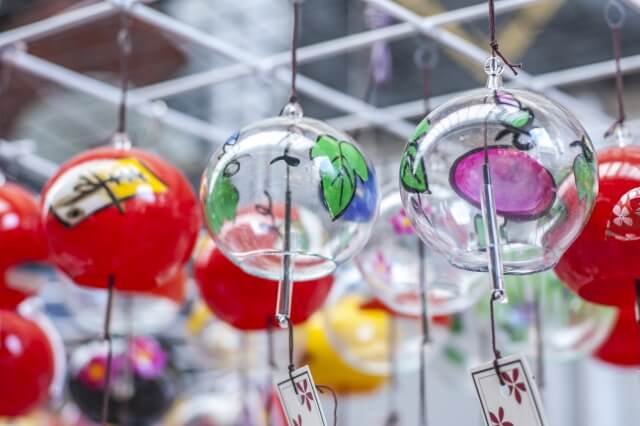
Ramune
Ramune is a carbonated drink like soda.
The drink comes in a glass bottle and it is sealed with a marble.
When you open it, you push the marble inward into the bottle.
As you take a sip, the marble moves inside the bottle, and that sound is cool like the wind bell.
Ramune is the representative drink of Japanese sumer, and it cools us down at summer festivals.
You can always find ramune flavored treats in Japan too, often in our own Sweets Packs as well!
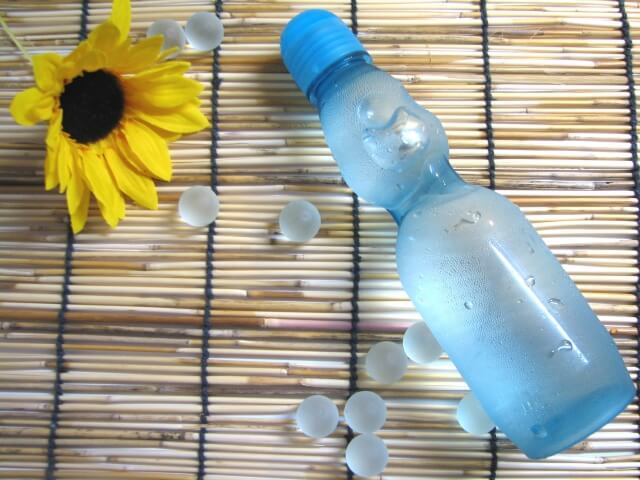
Water melon
Water melon is the representative fruit of Japanese summer.
There are mainly two situations that people enjoy watermelons in Summer.
One is at the beach. Have you heard about suika-wari?
Suika-wari means a watermelon splitting game, and it’s a beach game.
A person who is blindfolded tries to split a watermelon with a stick.
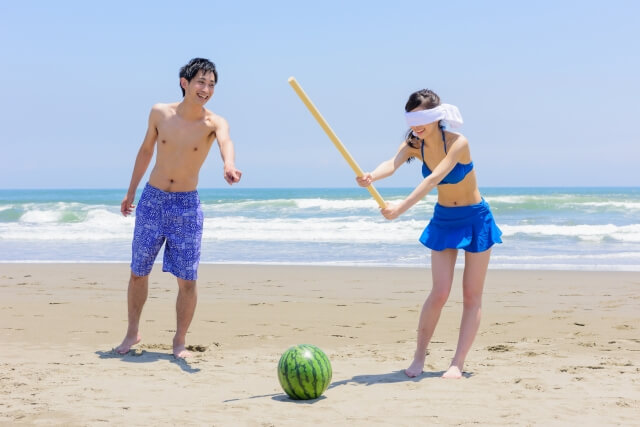
The other Japanese way to enjoy watermelon is eating it at engawa to cool down.
Engawa is veranda-like porch in Japan, and it is often seen in a traditional Japanese house.
It is really relaxing to have watermelon feeling a little cool wind on the engawa.
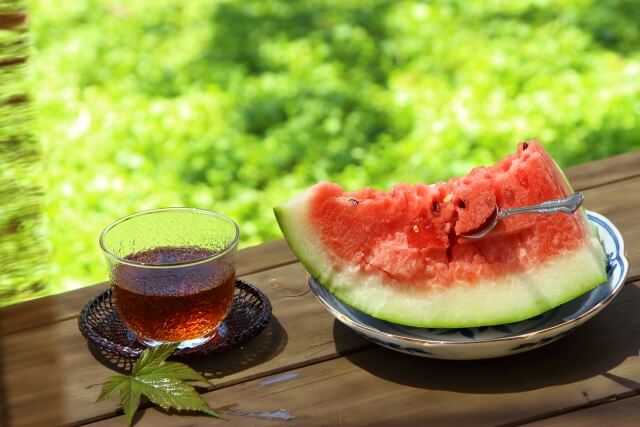
Asagao (morning glory)
The morning glory flower is called asagao in Japanese.
Asa means morning, and gao (kao) means face.
There are mainly two reasons that morning glories are popular.
One is that since this kind of flower grows tall, it can be a "green curtain."
A green curtain can shut out the sun and make a cool shade for people to have a rest.
Two, is that it blooms in the morning.
In the morning, people gets active because the heat isn't as strong as it is in the afternoon.
When they get up and see the flowers are blooming, it motivates and encourages them to be powerful for the day.

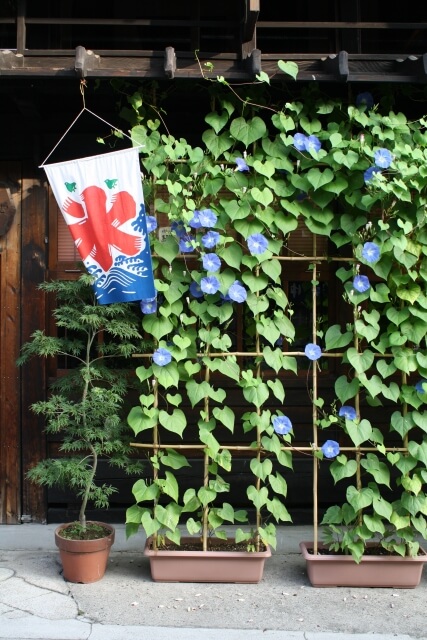
Even though summer in Japan is so hot and humid that I think I cannot survive every year, there are tons of beautiful and cool moments.
When you are travelling to Japan this summer, don't miss any of these summer cultures!
By Chisato@ZenPop
